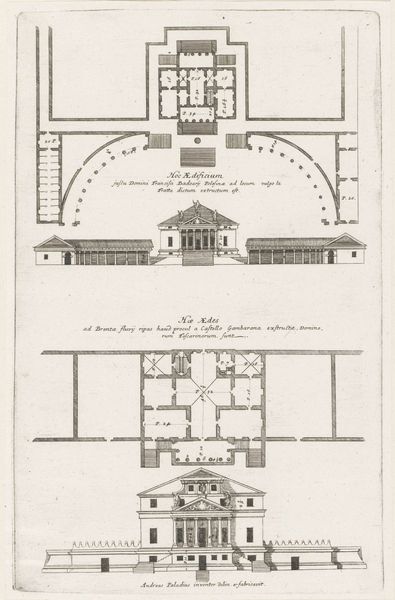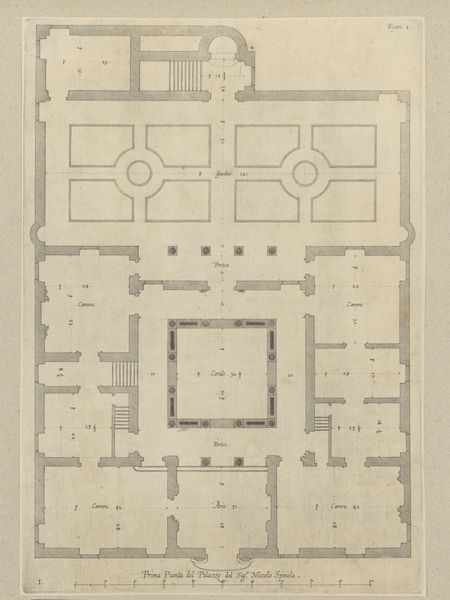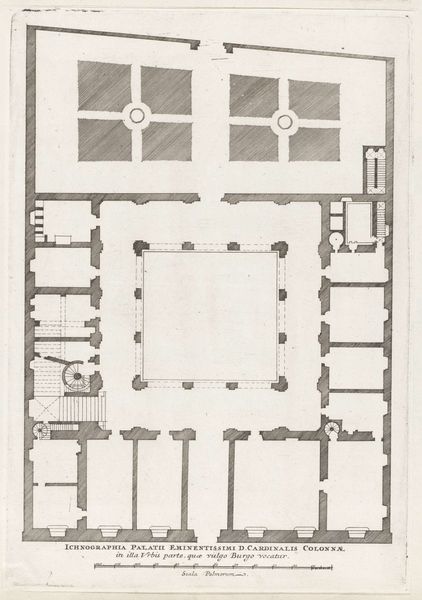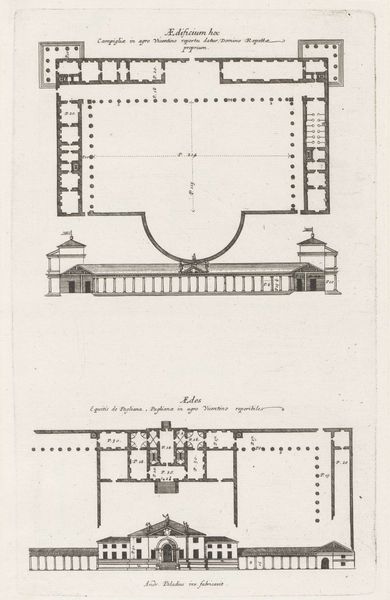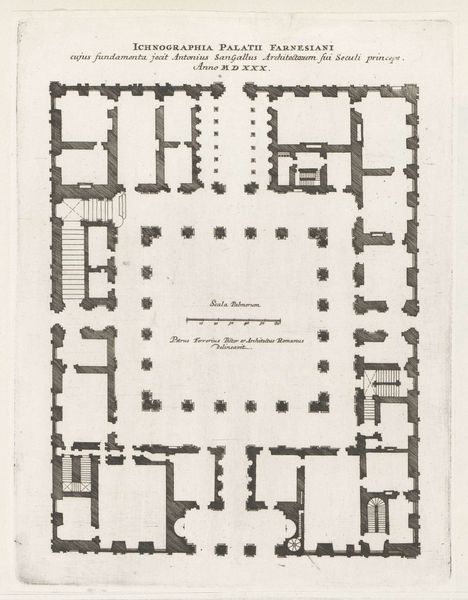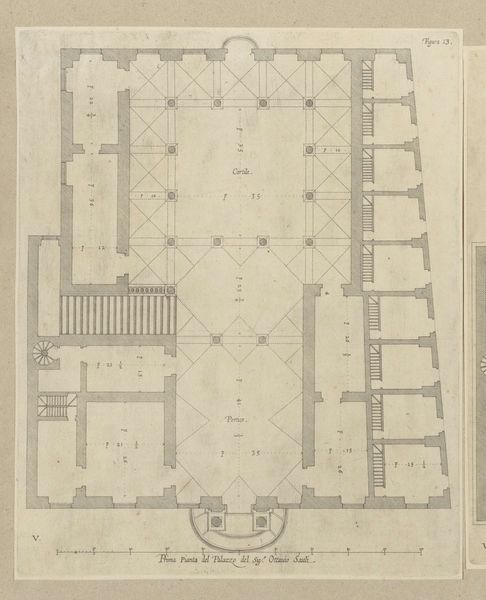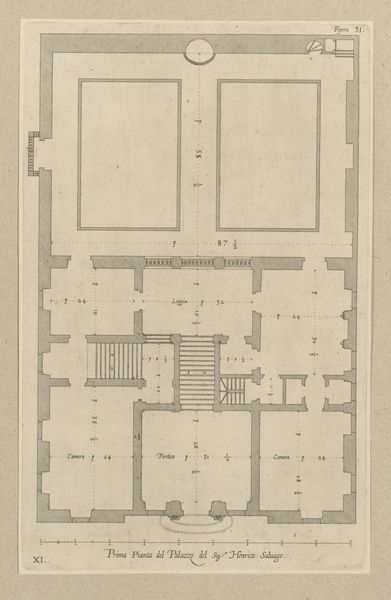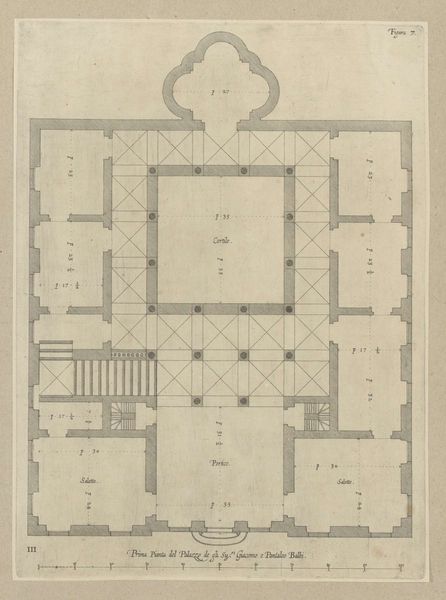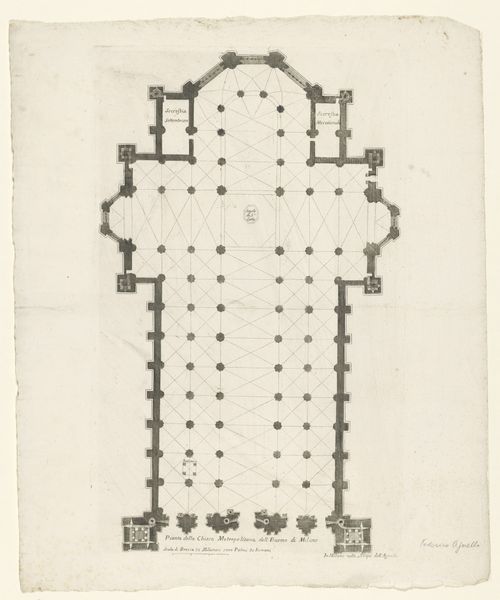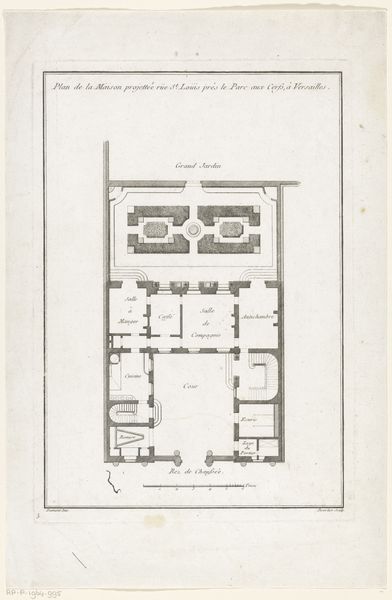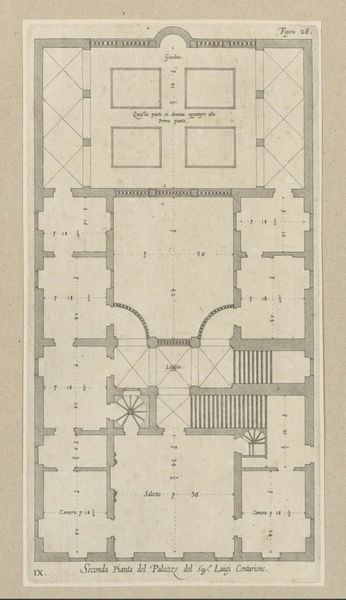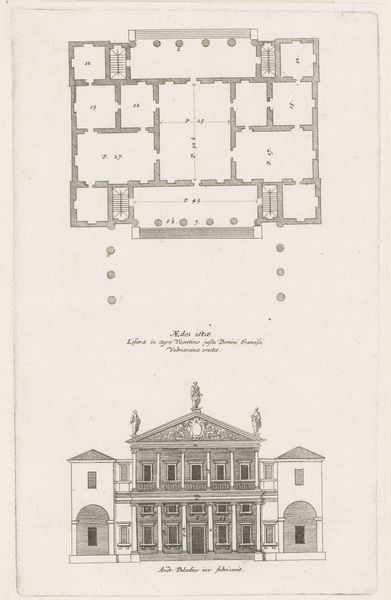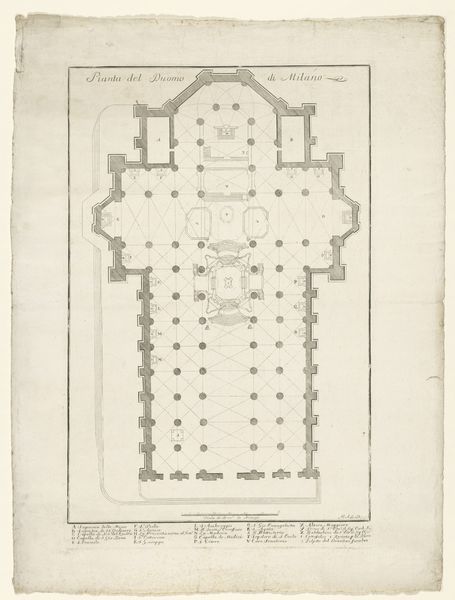
drawing, print, engraving, architecture
#
drawing
# print
#
form
#
11_renaissance
#
geometric
#
line
#
cityscape
#
history-painting
#
engraving
#
architecture
Dimensions: height 310 mm, width 189 mm
Copyright: Rijks Museum: Open Domain
Editor: Here we have a 17th-century print titled "Plattegrond en façade van villa ontworpen door Andrea Palladio," attributed to an anonymous artist. It presents a floor plan and facade elevation of a villa. It's quite intricate; the rigid lines and geometric forms suggest a structured, almost utopian vision. What's your interpretation of this piece, seen through a historical lens? Curator: This print offers a fascinating window into the social and cultural aspirations of the 17th century. These architectural drawings, popularized during the Renaissance, were more than mere blueprints. They projected power and control, especially considering Palladio's influence on elite architecture. How might this image have functioned within the broader visual culture of its time? Was it accessible to the public, or primarily intended for a specific audience? Editor: I imagine it would have been a sign of wealth and learning, not readily available. So its public role would have been indirect - through the built structure itself, influencing architectural trends for the elite. Curator: Precisely. And let's consider the location implied by the Latin text above the floorplan. It seems this building was consciously constructed near Roman ruins. What does this detail suggest about the commissioner's understanding of history and their social ambitions? Editor: The desire to link themselves to the grandeur of the Roman Empire? A claim to legitimacy? Curator: Exactly. It reveals how architectural patronage served as a form of historical narrative and social positioning. Also, consider that engravings like these were crucial in disseminating Palladio's ideas across Europe, effectively shaping the built environment. Now, reflecting on our conversation, what did you find most striking about how historical context informs our understanding of this work? Editor: The print becomes less about a building and more about visualizing a cultural program - ambition, historical connection, and social status expressed through architecture.
Comments
No comments
Be the first to comment and join the conversation on the ultimate creative platform.
